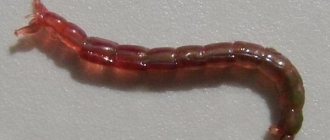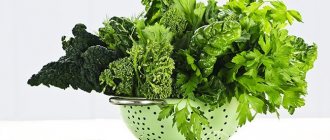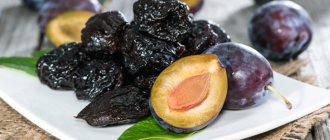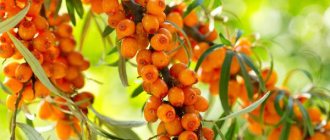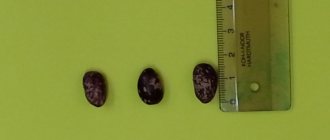From time immemorial, Ivan tea has been known not only for its pleasant aromatic taste, but also for its amazing healing properties, which make it indispensable in the treatment of many diseases. Recently, this drink has been gaining more and more popularity; people buy ready-made tea in stores or prepare it themselves, referring to numerous instructions on the Internet.
The process of preparing tea at home is quite labor-intensive, but if all the necessary conditions are met correctly, then it is quite possible to prepare fireweed tea yourself, fermented at your own discretion.
However, many people overlook the fact that storing Ivan tea is no less important than the process of preparing it and subsequent brewing. During storage, tea can also deteriorate, lose its beneficial properties, or lose its taste. To avoid this, you need to follow a few simple tips.
What is Ivan-tea
The leaves of the plant can be found almost throughout Russia, since its seeds easily scatter over long distances. Most often it appears near bodies of water, in coniferous forests, in garden plots and even near asphalt roads.
The leaves of this plant were used to treat ailments in times when medicines had not yet been invented.
The botanical name is Fireweed angustifolia, but popularly Ivan tea is called Mulberry, Elushnik, Ivanov tea, Red color, Weeds, Koporye tea, willow grass or fireman. It takes root well in areas of fires; other plants actively grow in areas with fallen fireweed leaves.
You can find Ivan tea everywhere, since its seeds easily scatter over long distances, populating large areas.
The main thing that makes Ivan tea stand out is its composition, which differs from other caffeine-containing drinks. It does not contain harmful elements such as caffeine, oxalic acid or purine bases that disrupt metabolism.
To make the drink from this plant better quality, a special technology for its preparation is used.
This unique herb contains a large number of beneficial substances that have a positive effect on the human body:
- vitamin C (large amounts collected from the above-ground part of the plant);
- B vitamins;
- organic acids, gallic acid;
- pectin, lectins, tannins (up to 20%);
- macro- and microelements (copper, iron, manganese, phosphorus, calcium);
- polysaccharides, coumarins, phytosterols.
Fermentation is the process of fermenting the leaves of a plant used to prepare a drink.
Tannins and a large amount of mucus have an enveloping effect. Tannin has anti-inflammatory and antispasmodic properties, and plant fibers improve the functioning of the digestive system. The dried herb is used as an analgesic and sedative. Regular consumption helps solve problems with the genitourinary system and acts as a prevention of tumor growths. In addition, the tea drink improves blood composition, reduces intoxication in the body, normalizes blood pressure, relieves insomnia, and effectively fights viral diseases.
The procedure is performed over a period of several hours to several days.
For reference! Most of the healing properties of Ivan tea are similar to baking soda, since the herb often grows on the ashes of peat bogs and forest fires, which is also alkali.
Healing abilities
The plant contains vitamins C and B, many different minerals: potassium, manganese, iron, copper, phosphorus, calcium. The juice contains lectin, pectin, organic and tannins. All of these substances, once inside the human body, have an anti-inflammatory effect, relieve spasms in various organs and remove toxic compounds. Fireweed is used to treat:
- gastritis;
- ulcers;
- gastrointestinal diseases;
- cleansing the body.
Fireweed serves as an excellent sedative, improves sleep and normalizes the functioning of the nervous system. It is recommended to drink for people who suffer from panic attacks and nervous disorders.
The plant contains antioxidants that block the action of free radicals, so fireweed is used for preventive purposes against cancer. The plant enhances the body's immune function and can even increase life expectancy. A course of herbs must be taken if a person often suffers from viral diseases (more than once a year) or experiences constant weakness and malaise.
Other indications for the use of fireweed are:
- conjunctivitis;
- otitis;
- sinusitis;
- anemia;
- kidney problems;
- herpes;
- inflammation of the pelvic organs;
- high blood pressure;
- arrhythmia.
When used regularly and correctly, fireweed does not cause harm, but in high concentrations it significantly lowers blood pressure and causes intestinal upset. For men, frequent use of medicinal herbs causes problems with potency.
Attention! Fireweed is contraindicated for use by people who suffer from thrombosis, varicose veins and thrombophlebitis.
Benefits and harms of Ivan tea
In Ancient Rus' they believed that the benefits of Ivan tea were simply invaluable. More than 90% of all diseases known at that time were treated with fireweed infusion. The remaining percentage of pathologies were treated with other beneficial herbs and honey; at that time there were no medicines and people had no choice but to use the gifts of nature.
But even today, with a big leap in the field of pharmacology and the medicinal system, Ivan-tea has not lost honor. It is widely used in the treatment of various pathologies. Even professional doctors give recommendations to their patients about taking fireweed infusion as an adjuvant as part of complex therapy for various diseases.
Traditional recipes using Koporye tea are used today to strengthen the immune system and get rid of the symptoms of colds, flu and ARVI. Many men use Ivan tea for preventive purposes or to get rid of potency disorders, prostate adenoma and other “male” pathologies.
A large number of microelements saturates the body with strength and energy, allowing a person to feel calmer, more confident, and full of energy. Tea perfectly tones and sets you up for work, so it is recommended to drink the drink in the morning, immediately after waking up, instead of coffee, which only brings harm.
However, the product also has some contraindications that you should pay attention to when using raw materials for brewing the drink for the first time:
- individual intolerance (after the first use of Ivan-tea, you need to pay attention to the body’s reactions, if everything is in order, you can use the product subsequently);
- allergic reactions (people prone to allergies to natural products should take such an effective drink with caution);
- gastrointestinal pathologies (with prolonged use, fireweed infusion leads to stomach upset in some people).
Otherwise, the plant has virtually no contraindications. It can be consumed an unlimited number of times per day, if the body reacts normally to such a rich saturation of nutrients.
Important! When planning to introduce a new product into your diet in the form of a drink from Ivan tea, you need to carefully monitor your own reaction. If the body does not accept such a remedy or signs of allergies appear, it is better to stop using the infusion of this herb.
Ivan tea has been used for medicinal and preventive purposes for more than a century. During this time, people have undoubtedly become convinced that this is a truly useful and high-quality product that helps cope with some diseases. Among other things, Ivan tea adjusts the normal functioning of the body, restoring metabolic processes, making a person calm and self-confident. Its use is indicated for various ailments, as well as for preventive purposes to normalize blood pressure, blood circulation, give strength and saturate with energy.
Tea that warms and heals
During the cold season, the risk of hypothermia increases. Frost and chilly wind chill to the bones, frozen feet cause colds. A cup of hot fireweed tea with linden honey will help you avoid unpleasant consequences. The main thing is not to delay taking the healing drink, prepare and drink it at the first opportunity. When the temperature rises, a warm infusion will help you sweat and remove toxins.
Fireweed has anti-inflammatory and antiseptic properties and helps in the fight against germs. Gargling with a strong infusion is useful for pharyngitis, sore throat, and acute respiratory infections. Washing the nasopharynx is recommended for a runny nose, and poultices are used to treat catarrhal otitis. Painful symptoms are often accompanied by increased blood pressure (BP) and headache. Ivan tea does not contain caffeine; moderate intake of a weakly brewed drink gently reduces blood pressure.
In winter, diseases of the musculoskeletal system worsen - arthritis, arthrosis, gout. Aching pain in the joints does not allow you to sleep. A warm decoction of fireweed relieves the condition. Taken internally, it promotes sleep. External compresses or lotions alleviate pain.
In cold weather, the genitourinary system is especially vulnerable. In women, even one-time hypothermia can cause cystitis or inflammation of the appendages (adnexitis). Men suffer from manifestations of prostatitis. Fireweed infusion cleanses the urinary tract of microbes and alleviates the general condition.
Ivan tea is a source of nutrients
The popularity of the drink is associated not only with its pleasant, unique taste. It has been noticed that regular consumption of fireweed tea during the winter cold protects against frequent colds and increases the body's resistance.
How long can already brewed tea be stored?
In other countries, including ours, the procedure for brewing tea is greatly simplified, but the tea should be stored in the teapot for the same amount of time - from 10 to 20 minutes. In Asia they don’t drink cold tea, but lovers of this cold drink don’t have to worry about its “harmfulness” - the infusion retains its benefits for up to 2 hours.
Interesting materials:
How to get your first Instagram followers? How to cast on loops from edge stitches? How to start using a 3D pen? How to start on a new line in iPhone? How to start cooperation with Wildberries? How to start your fairy tale? How to start a whirlwind in The Witcher 3? How do Beeline numbers begin? How did Ivleeva start? How should you hang a horseshoe?
Collection of fireweed leaves.
- The leaves are collected in June-August from the beginning of fireweed flowering until it fluffs up. It is necessary to collect in dry weather, away from roads and polluted places, preferably in shaded places along the edge of forest clearings. The leaves of such plants are more tender and juicy, they curl more easily and ferment better, and the tea they make tastes better.
- It is convenient to collect fireweed leaves by holding the stem near the peduncle with one hand and running the other hand down to the middle of the stem (in the photo this part of the stem is limited by red ribbons). The lower leaves are left on the stem because they are rougher than the top ones. It is advisable to leave 3-4 tiers of leaves under the flowers; the plant needs them to lift moisture from the roots and collect dew. This method of collecting leaves does not harm the plant - it continues to bloom and produce seeds.
- So, for the next batch of fireweed tea, I collected a full bag of leaves (1.2 kg)
I recommend collecting fireweed flowers separately and then adding them to fireweed tea.
Factors that affect shelf life
The preservation of fireweed properties is influenced by the following factors:
- Correctness of the workpiece . It needs to be collected at the right time of year.
- Processing method . It lasts the longest when dried.
- Ambient temperature . It should be warm, but not higher than +25°C.
- Package . It should close tightly.
Ivan-tea withering of leaves.
- This stage is needed to make it easier to curl the leaves in the future. The collected leaves are inspected and damaged ones are removed. There may also be snails, so we remove them too. It is better not to wash the leaves before withering, because... beneficial microorganisms involved in the fermentation process can be washed away. Then the leaves are laid out in the shade on cotton or linen in a small layer (3–5 cm).
- On average, the process takes 4-8 hours, depending on humidity and air temperature. On a dry, sunny day the process goes faster, on a rainy and cool day it takes longer (a day or more). Therefore, you need to control the process and periodically stir the leaves every hour so that they wilt evenly. The readiness of the leaf is determined by squeezing the leaf in half. If, when folding the sheet, you feel a “crunch” of the central vein, then the sheet is not yet ready. If most of the leaves do not “crunch,” then it’s time to move on to the next step.
- If the leaves are already wilted, and I don’t have time to deal with them, then I wrap them tightly in the same fabric on which they dried. This way the leaves can lie there long enough until we are free.
Rolling and rolling with a rolling pin
- For small amounts of herb, rolling the leaves by hand or rolling them with a rolling pin will work. To do this, each leaf is taken in hand and twisted into spirals. Using a rolling pin, roll out the lumps of leaves with a rolling pin and hold them tightly together.
The resulting “snails” are placed in a glass jar and covered with a nylon lid, and left for fermentation.
Fermentation
Pre-rolled and squeezed leaves of Ivan tea are placed under pressure. Depending on the time spent in this state, the taste of the future drink will change. There are 3 degrees of fermentation:
- Leaves kept under pressure for 3 to 6 hours are weak. The drink has a green color, mild taste and delicate aroma.
- Raw materials that were fermented for 6 - 12 hours are medium. The color of the decoction is red, the taste is more tart.
- Fireweed after 24 - 36 hours under pressure - a deep degree of fermentation. The tea is very rich, with a brown color.
After the leaves are prepared (juice has formed), they are placed in an enamel container and compacted tightly to increase the amount of liquid. The resulting mass is covered with a plate and pressed down with a heavy object. Everyone decides for themselves what the fermentation time will be. But it should be borne in mind that after 36 hours the product will lose its healing and taste qualities. At the same time, ready-made tinctures from raw materials overexposed under pressure will acquire a moldy smell.
Fermentation
Fermentation is the fermentation process that produces beneficial enzymes. This happens when optimal conditions are created. After the procedure, the leaves of fireweed will acquire a certain taste.
Lightweight
The first stage of fermentation lasts 3-6 hours. It leaves behind a pleasant floral, sweet scent. When brewed, the tea emits a bright sweet aroma, the taste is delicate, light, sweet.
Average
The second degree lasts 10-16 hours. A longer process produces a sour taste. The tea will be tart and the aroma will be rich. It should be mixed with regular green or black tea.
Deep
The longest fermentation lasts 20-36 hours. After it, the herb has a tart, bitter taste and a slight floral smell. It is added to tea compositions in small quantities. It is not very pleasant to drink in its pure form.
Important! The shorter the fermentation lasts, the more pleasant the Ivan tea tastes. It's better not to hold on than to over hold.
Best before date
According to technical conditions, Ivan tea can be stored for no longer than two years. In practice, some people store it for 6 or even 10 years. They claim that since fireweed is not just dried, but fermented, even while in a closed container, processes called dry fermentation occur in it. This only improves the taste and smell.
To store fireweed correctly, you should take into account factors such as temperature and humidity, ensure there is no direct sunlight and choose a suitable container. In such conditions it will be perfectly preserved for a long time.
Why and how to ferment Ivan tea at home
Fermentation is an important stage in preparation for using beneficial herbs at home. Fermentation is the process of fermenting the collected leaves. It takes from several hours to several days.
The duration of the process, as well as the temperature used for this, affect the color, aroma, and taste of the drink.
The procedure is necessary because the beneficial substances of fireweed mainly have an insoluble structure. Fermentation helps them dissolve for better absorption by the body.
If you immediately brew collected and dried leaves that have not undergone fermentation, the real taste and aroma of the plant will not be revealed.
If the fermentation process is not stopped in time, the leaves of the plant may become moldy.
Ivan tea, fermentation at home:
- During processing, chemical transformations occur in the plant cells. The interaction of enzymes with oxygen and oxidation begins, improving aromatic qualities.
- Microorganisms are activated and prebiotics begin to multiply.
- As the leaves curl, prebiotics interact with the sap, actively feeding.
- The final stage of processing is the leaves are dried.
Important! After harvesting the herb, do not wash the leaves because beneficial microorganisms necessary for fermentation may be removed.
This procedure is also very important, since under-dried leaves can spoil in the packaging, and over-dried leaves will acquire a burnt taste.
Description of the plant
The second name of the plant is narrow-leaved fireweed.
Ivan tea grows in most regions. It can be found in the central and southern parts of Russia, Siberia, and the Urals. It is not picky about climate and soil; it mainly grows on forest edges or near trees, as well as near rivers and lakes. Interesting!
If the land has been repeatedly burned by fires, then fireweed will definitely grow in this place next year.
Fireweed grows in large groups, and during flowering it definitely cannot be confused with anyone else. The height of an adult stem reaches 30-50 centimeters. The stem is erect, most of it is decorated with small flowers of violet-crimson color with a diameter of 5-7 millimeters. Flowering occurs in July and lasts until September. Inside the flowers, by September, a head with seeds ripens, from which young plants will then appear.
How to tell if fermentation is complete
The raw materials prepared by one of the methods are placed in containers, covered with a damp cloth, and placed in a shaded room at t = 24-26°C. Air temperature is an important element in the fermentation procedure. If it is insufficient, then fermentation will stop; if it is too high, the tea will not have the proper taste and aroma.
The duration of the procedure is no less important. There are 3 degrees of fermentation:
- Easy. The leaves are fermented for 3 to 9 hours. They are ready when a light floral-fruity aroma begins to emanate from them. The taste of this tea is soft, with a delicate taste and smell, and the color is light yellow.
- Average. Fermentation takes place for 10-19 hours. The tea made from such leaves is slightly tart, with a pronounced aroma and slight sourness, and its color is green.
- Deep. The fermentation period varies from 20 to 36 hours. The taste of tea is tart, the color is dark, the aroma is fruity.
When choosing longer degrees of fermentation, it is necessary to remember that the longer the fermentation time, the greater the likelihood of mold appearing in the raw material.
Signs of corruption
You can determine that fireweed has gone bad by the following signs:
- A musty smell, reminiscent of long-stayed hay.
- Smell of mold.
- Traces of pest damage.
- Formation of mold deposits.
- Bitter taste of the drink (provided that the herb was properly prepared).
It is not recommended to brew missing fireweed tea. It is also undesirable to make alcohol tinctures from it. It can develop harmful microorganisms and fungi , which can be harmful to health. It is better to throw away such a product. If there is a lot of it, it can be composted, which is important for people involved in agriculture.
Drying fermented Ivan tea
This is the final procedure. Fermented leaves can be cut into smaller pieces. Then they are laid out on a baking sheet covered with parchment paper in a layer of no more than 1 centimeter. The raw materials are loosened a little to break up possible lumps.
Place a baking sheet with leaves in an oven preheated to 90° for 2 hours. Then the temperature is lowered to 50° for final drying. The raw materials must be constantly mixed for uniform drying. The tea is ready when the leaves darken and begin to break.
Important! Drying of raw materials should be done with the oven door open.
After the leaves are dried in the oven, they must be left in the room for a while to cool. Then the tea is poured into fabric bags, which are hung in the open air (ventilated balcony, loggia). Well-dried tea should rustle when you shake the bag.
In the future, fireweed tea is stored in glass, birch bark, and tin jars. From above they are closed with lids made of appropriate material. The place in which the containers are kept must be dry and dark. This could be, for example, a pantry or kitchen cabinet.
Types of drying
The very last stage in preparing the product is drying. It involves a thermal effect on leaves and flowers. For drying, you can use an oven or an electric dryer, which are used for preparing vegetables and berries. The result is the same everywhere, the only difference is the process time.
In the oven
The fastest way to dry fireweed is to put it in a preheated oven for a few minutes. To do this, first the fermented leaves are cut into small pieces no more than a centimeter wide and long. Then they are laid out on a baking sheet and placed in the oven at a temperature not exceeding 100 degrees. Open the cabinet door slightly and leave the tea to dry for 2 hours. Turn the grass over periodically to prevent it from burning.
When the leaves begin to break and crunch, stop heating and take out the baking sheet with the leaves. Fold several layers of gauze on the table and pour fireweed tea onto it, then form a bag, tie it and hang it in the hallway or in the room at home. It takes several days to dry.
Important! Dry weather is required for outdoor drying. If you are drying tea at home, you can place the gauze with tea on a sunny windowsill.
Using electric drying
Drying can be used when preparing fireweed; it makes the preparation process much easier. Lay out the leaves on the bowl and select a temperature range from 80 to 100 degrees. Turn on the drying for one and a half to two hours. After time, the fireweed is tasted by touch. If the sheet breaks well, take out the contents and transfer them to a fabric bag. The fireweed is dried for another 2-3 days at home, and then put away for storage.
In the sun
The oldest method also takes the longest. Determine the sunniest place at home. This may not necessarily be a window sill. A table or cabinet in a well-lit room will do. Lay newspaper or paper towels on the surface and pour fireweed tea onto the paper. Spread it in a thin layer and leave to dry for a week.
Drying time depends on humidity and sunlight. If the weather outside is cloudy, the fireweed will dry for at least 2 weeks. Turn the leaves over periodically, at least once every 3 days. Then, when they are dry enough, they are put away for storage.
How to make tea through a meat grinder
To avoid spending a lot of time twisting the herbs manually, you can use a kitchen meat grinder. The collected leaves are immediately passed through a meat grinder. So that they pass well and do not get tangled in the blade, they are first crushed into small lumps.
The resulting mass is crushed a little until liquid appears, and then the twisted grass is transferred to a pan and a pressure is placed on top. The process is then carried out according to the methods described above.
How to cook
Dried herbs must be brewed properly. Its amount depends on the nature of the disease. Each disease has its own rules for intake and breeding:
- For gastrointestinal diseases, ulcers and gastritis, brew 20 grams of herb in a glass of boiling water. Infuse the mixture for no more than an hour, then filter through cheesecloth and drink in 3-4 doses during lunch or dinner. The course of treatment is a month.
- For anemia, weak immunity, general malaise, take 1 tablespoon of fireweed tea per 200 milliliters of hot water and brew for half an hour. Then the resulting mixture is drunk 2-3 times throughout the day. The course of treatment is 3-4 weeks.
- For sore throat, fireweed tea is used for rinsing. Take 2 tablespoons of dried powder per glass of hot water and leave for 10-15 minutes. Then gargle 2-3 times a day for 5-7 days.
- To improve sleep and normalize blood pressure and heart rate, prepare a decoction: you will need a tablespoon of fireweed for 200 milliliters of water. Heat the mixture over the fire until it boils and boil for another 10 minutes. Then cool and drink the resulting decoction at night or in the evening in 2 doses for 2 weeks.
Cooking secrets
A regular teapot is suitable for brewing herbs. It must be pre-washed and doused with boiling water. You can use an infuser - it is convenient to use because the grass is easy to remove. There are a few more nuances when brewing Ivan tea:
- you need to use filtered or spring water;
- The herb should be brewed in portions: first fill no more than 1/3 of the teapot volume with water, after 2-3 minutes add water to half and only in the fifth minute boiling water is poured completely;
- You cannot add sugar, honey, syrups or milk to tea. Products will only spoil the taste of tea and reduce its beneficial properties.
After preparation, the decoction or infusion should be drunk immediately on the day of preparation, since the healing ability is slightly lost overnight. Moreover, the taste characteristics and aroma disappear. The herb that has already been used for brewing is not suitable for further preparation. You can throw it away.
Storage conditions
How to properly store dried Ivan tea? Like any dry grass, this material is afraid of dampness. Therefore, for their supplies they choose a dry, dark place with a temperature of +10°C - +25°C. It is better to use a glass or tin container with a tight-fitting lid. The jar must be labeled so as not to accidentally confuse its contents with other herbs.
- The shelf life of dry Ivan tea will not be shortened if you keep it in a tightly tied canvas bag. Air humidity at the place of its storage should not exceed 50%. A dry basement and cool pantry are good places for dried plant material.
- The shelf life of dry Ivan tea is 2 – 3 years. Supplies should be periodically checked for pests and unpleasant odors.
- Dried fireweed herb purchased at a pharmacy is usually not intended for long-term storage. More airtight packaging, such as glass containers with a tight lid, will help correct the situation.
How long Ivan tea can be stored depends on the correct implementation of all stages of raw material procurement and subsequent compliance with storage conditions. If everything is done correctly, you can improve your health all year long with the help of a healing drink with excellent taste.
Ideal container for Ivan tea
In stores, fireweed is most often sold either by weight, packaged in craft bags, or in factory packaging - then it is in a sealed plastic bag, which is placed in a thin cardboard box. Neither the first nor the second option can be called ideal, so the grass should be transferred to a more suitable container immediately upon arrival home.
You can learn about the advantages and disadvantages of all packages in which Ivan tea is stored at home from the table:
| Glass | It does not allow moisture and air to seep inside the jar, which ensures better preservation of fireweed. | It transmits light, which, firstly, promotes the development of bacteria, and secondly, has a bad effect on the taste of fireweed - chemical reactions are triggered in it, as a result of which aromatic substances are destroyed. |
| At the same time, the glass does not release the molecules of essential oils - they remain inside the package, so the smell and taste of the herb do not change for a long time. | ||
| In addition, this material is chemically inert - it does not react with any of the components of fireweed. | ||
| Paper | The advantages of paper include its availability and low cost. It is completely unsuitable for long-term storage of dried herbs. For example, you can wrap it around a glass container to protect its contents from light. | Paper that is not intended for food use may contain harmful components. But the main disadvantage of this material is its ability to transmit and accumulate moisture. If the room where fireweed is stored is too damp, the herb will become moldy and become unsuitable for brewing. |
| Plastic | Does not allow moisture to pass through and does not allow the aroma to evaporate. | Creates a “greenhouse effect”, which negatively affects the quality of the drink. In addition, most plastics are transparent. |
| Textile | Linen and cotton bags can only be used to store fireweed in rooms where the humidity level is never too high. It is also advisable to place the bag in a small cabinet where there are no foreign odors - this will create additional protection against moisture penetration and prevent the smell of the grass from “fizzle out.” | It allows and absorbs moisture, thereby shortening the shelf life of the herb, and also allows molecules of aromatic substances to seep out, causing dry leaves to lose their aroma. |
| This material is only suitable for short-term storage - no more than six months. The fabric has no advantages as such. | ||
| Porcelain, clay | Limits the access of sunlight inside the container. | The only drawback is the lid - it is rarely sealed, which means moisture penetrates into the container. Fireweed also loses its pleasant aroma. |
| Provides a natural level of humidity. | ||
| Unglazed products can allow air to pass through, but this does not affect the quality of fireweed tea during long-term storage. | ||
| Metal | Boxes and jars made of food-grade tin are ideal for storing fireweed. They retain all the qualities of the grass, and their separate advantage is the presence of a tightly closing lid. | If a coffee tin is used, it must be thoroughly rinsed and dried to prevent the tea from becoming saturated with foreign odors. |
It turns out that you can store dried herbs either in a glass jar wrapped in paper or in a clay vessel. But the best thing is in a food-grade metal tin.
Basic recommendations
The basis for proper drying of herbs is a well-ventilated area. The ideal place is the attic, where air circulates constantly, but the living room is also suitable.
The room should not be too dusty or dirty. The kitchen, bathroom and other wet areas are not suitable for drying.
The next good place is outdoors, but only in warm, dry weather, preferably in the shade. Can it be dried in the sun? Drying in direct sunlight is unsuitable; the plant is prone to darkening and loss of medicinal properties.
Regardless of how to dry - without an oven or in an oven - fireweed must be thoroughly dried as soon as possible, because with slow drying there is a risk of mold, blackening, and sometimes infection by various pests.
Can it be dried without fermentation? Yes, but the drink may subsequently have a less rich taste and aroma - this should be taken into account.
How to dry without fermentation? If you collect a long enough part of the plant, it can be tied into bunches and hung. It is necessary to provide the grass with air access from all sides, while regularly wrapping the bunch.
Leaves, flowers and roots are best dried on racks, sieves, small paper boxes or other surface lined with clean absorbent paper. When drying this way, always lay out the plant in a thin layer.
Remember to turn and aerate frequently. Before harvesting, the roots must be thoroughly cleaned, rinsed with clean water and immediately dried with a cloth. The harvesting of roots is accelerated by cutting them into small pieces or longitudinal cutting. Flowers, leaves or other parts of plants are not washed in water before being prepared for tea using the drying method.
Should I use the oven or not? Can it be dried in a dryer or oven? Yes, if there are no favorable conditions or space for natural drying, you can use an oven or special dryers
However, when using these and similar heat sources, it is important to control the set temperature and control the time so that the raw materials do not burn
It is important to know what temperature to dry at - the recommended temperature varies for different parts of the plant. Usually it is around 30-40°C. When drying fireweed in the oven, make sure that the temperature does not exceed this indicator
When drying fireweed in the oven, make sure that the temperature does not exceed this indicator.
Some sources also mention the possibility of microwaving, while other herbalists reject this option entirely.
No less important is the fact of how long to dry the herb in the oven. On average, the time is about 1 hour - the flowers and leaves should become brittle and not sticky, but, at the same time, keep their shape and not crumble.
Is the plant prepared correctly? Whether fireweed is prepared correctly can be determined by slight wrinkles and fragility (it is easily rubbed between the fingers).
If the plant turns a deep brown or even black color during the process, this means that there was an error in the process. This may be due to steaming in an inappropriate container during collection or as a result of a long period between collection and drying.
The problem can also be caused by humidity during harvesting or a layer that is too thick. This herb is unsuitable for storage and subsequent use.
A satisfactory result of the preparation is a “healthy” color and aroma. Folding should not be delayed for storage, because... Fireweed tea can become moisturized or “acquire” insects.
Common Mistakes
When preparing medicinal herbs for the winter, some people make mistakes:
- Do not wash fireweed leaves before rolling, as this will disrupt the fermentation process;
- the first day after collecting raw materials, they give it time to wither;
- Ivan tea overdried in the oven or in the sun loses its properties;
- drying is carried out strictly according to the instructions, stirring the leaves periodically;
- leaves, roots and petals are prepared separately;
- Fireweed should be stored in a glass container in a shaded place.
Sources
- https://severdv.ru/sovety/samye-luchshie-sposoby-fermentaczii-ivan-chaya/
- https://travaks.com/ivan-chaj/kak-prigotovit-ivan-chaj/
- https://dary-prirody.su/chem-polezen-ivan-chaj-zimoj/
- https://horosho-zhivem.ru/ivan-chaj-fermentatsiya/
- https://hozzi.ru/hranenie/ivan-chaj
- https://zen.yandex.ru/media/id/5c88e797d7bf8500b3ecf14b/5c9483baa328fe00af70f8fe
- https://ogorod-bez-hlopot.ru/xranenie-i-pravilnoe-zavarivanie-ivan-chaya.html
- https://kakxranit.ru/medicina/kak-xranit-ivan-chaj.html
- https://mschistota.ru/storage/kak-xranit-ivan-chaj.html
How long does tea last in a thermos?
It is not recommended to keep brewed tea in a thermos for a long time. The fact is that in a soulless space, harmful bacteria can develop in a liquid. Also, after a few hours, the finished tea loses its benefits, taste and aroma. It’s better to pour boiling water into a thermos and take the tea with you in dry form. When you want to enjoy a cup of hot drink, pour one serving of tea leaves with hot water from a thermos.
Brewing methods
Now let's look at the main methods of brewing fireweed tea to obtain different versions of the drink.
In a regular teapot
Before brewing tea using this traditional method, I recommend preparing the teapot by heating it or pouring boiling water over it from the inside. Then pour 2-3 teaspoons of tea leaves and pour 500 ml of hot water. This is the recommended proportion, but in general, the dosage of tea leaves depends on the saturation you prefer and is selected according to your taste.
An interesting feature of Ivan tea is that, like green tea, it can be used repeatedly. How many times you can pour used tea leaves depends on the strength of the raw material.
If these are properly fermented leaves, then brewing five times is acceptable. Moreover, the second and third time the drink will have the maximum concentration of nutrients, the most pronounced taste and aroma
Kettle + insulation
This method differs from the previous one by increasing the brewing time due to the fact that the teapot is wrapped in a warm towel or a special cap. At the same time, the tea leaves immediately open and give the drink a natural richness of taste and aroma.
In a thermos
We take a liter thermos and treat it from the inside with boiling water. Then add 3 teaspoons of tea leaves and pour hot water. Close the thermos and steep the drink for an hour. At the end of the brewing process, pour the finished drink into a glass or ceramic container.
“Grandma’s” method
Our grandmothers often used this method of brewing fireweed tea, since it is the most gentle and the beneficial substances are better preserved. Unfermented tea is usually brewed this way.
Take a liter enamel pan, put a couple of tablespoons of dried leaves and flowers into it and fill it with cooled boiled water. Place on low heat and heat up. When bubbles begin to appear in the water, remove from the stove. Cover with a lid and leave for about 10 minutes.
With milk
An unusual, soft and refined taste is obtained from a drink brewed with milk. Place a teaspoon of tea leaves into the prepared kettle and pour in 200 ml of hot milk. Leave covered for 15 minutes. We are guaranteed a great mood and peace of mind after such a drink.
Cold brew
I would call this method infusion rather than brewing. Pour a tablespoon of tea leaves, preferably fermented, into a liter of cold water, boiled or spring water, and leave covered for at least 12 hours. By eliminating heat treatment in this way, we preserve as much as possible all the valuable nutrients and vitamins in our drink.
From fresh leaves
These were ways to brew dried fireweed tea. But you can also use fresh leaves and flowers. We rinse them under the tap and place them in a suitable enamel bowl. Fill with cold water and boil for 5 minutes over low heat. Remove from the stove and leave covered for at least 10 minutes.
Fireweed tea is useful to drink not only in its pure form, but also in combination with other plants and berries. Which ones exactly depends on their mutual compatibility. Leaves of black currant, strawberry, nettle and mint, flowers of oregano, linden, chamomile and thyme, sea buckthorn and black currant berries, as well as ginger root go well with fireweed.
Additional tips and tricks
Dried fireweed has many beneficial properties. It is often used to treat stomach ailments, inflammation and good sleep. When using fireweed, it is recommended to follow several useful tips:
- dried tea can be stored in linen or paper bags; due to additional ventilation, the shelf life increases;
- fireweed is mixed with ordinary types of tea;
- purchased finished raw materials are stored much less;
- Ivan tea half an hour before rest strengthens sleep and calms the nervous system;
- It is not recommended to drink medicinal herbs for lactating and pregnant women and children without consulting a doctor.
What are thyme and thyme
The thyme genus has more than 400 varieties. Of these, two large groups stand out - creeping and ordinary subshrubs. Thyme belongs to the first category. In short, this is a fragrant thyme of a certain variety. It grows in many of our regions and has long been used in folk medicine. And it is even included in the register of medicinal plants.
The genus of fragrant thyme belongs to the Lamiaceae family. The main representatives are small bush-like plants. All types are rich in phenolic compounds and have a bright aroma. It was thanks to the smell that thyme was noticed by chefs. Today it is collected and used for culinary purposes fresh or after drying.
It is recommended to collect thyme for drying in the winter in June and July. Flowers, leaves, and young stems are used. Drying is carried out in air or in an electric dryer. Shelf life: 24 months.
Where do you get thyme?
CollectingBuying
What does thyme and thyme look like?
A subshrub with branched stems rarely exceeds 40 cm. Thyme is a climbing species of thyme. The stems can creep along the ground, then rise towards the sun. The shape is influenced by the place of growth and relief features.
Other characteristics:
Recently, thyme has been grown and collected on their own plots. To do this, you can easily buy or collect seeds. Sometimes young bushes are dug up and transferred to the garden. They survive the winter well and are not afraid of low temperatures. At any time you can harvest your crop and dry it.
Many people unknowingly consider thyme an herb. In fact, it is a woody subshrub. And it can grow in one place for 25-30 years. Only thin stems are collected.
Beneficial properties of dried thyme
The plant is rich in vitamins A, E, group B, C, K, PP. Contains iron, potassium, manganese, zinc, copper, selenium and a dozen other substances valuable for the human body. Essential oils and flavonoids are of particular value. The concentration of useful substances depends on when to collect and cut the thyme for drying. The method of preparing for the winter also affects
It is important to dry properly. We'll talk about this below
Useful, medicinal properties of thyme:
- liquefies, removes mucus. Helps cure bronchitis, softens cough;
- increases immunity, helps the body fight viruses and bacterial infections;
- heals the intestines. Decoctions from drying are used to normalize stool, eliminate constipation, and expel pathogenic microorganisms;
- helps cope with boils, pimples, pustular formations, and non-healing wounds. Use externally;
- banishes migraines, helps cope with neuralgia, has a positive effect on the nervous system;
- normalizes sleep and has calming properties.
It has long been customary to collect thyme and use it to treat alcoholism. You can still find very interesting recipes from fresh plants and drying. But the effectiveness, alas, has not been proven. Below we will figure out when it is better to collect thyme for drying for the winter. If you do any preparation, do it according to all the rules.
The Lamiaceae family also includes basil, sage, mint, oregano, and marjoram. All these plants provide health benefits and have a rich chemical composition. You can safely collect and store for the winter.
Possible contraindications for use
Even the most useful plant can be harmful if you are intolerant to it. Thyme is rich in various compounds that can provoke an allergic reaction.
Therefore, pregnant and lactating women should use with caution.
Contraindications:
- liver and kidney diseases;
- disorders of the thyroid gland;
- stomach ulcer;
- cerebral atherosclerosis;
- increased stomach acidity.
Thyme is contraindicated for children. Due to the high concentration of various compounds, it is not recommended to add it to the diet of children under two years of age. For medicinal purposes it is used after 12 years. At an early age, the plant in high concentrations will cause irreparable harm to health.



